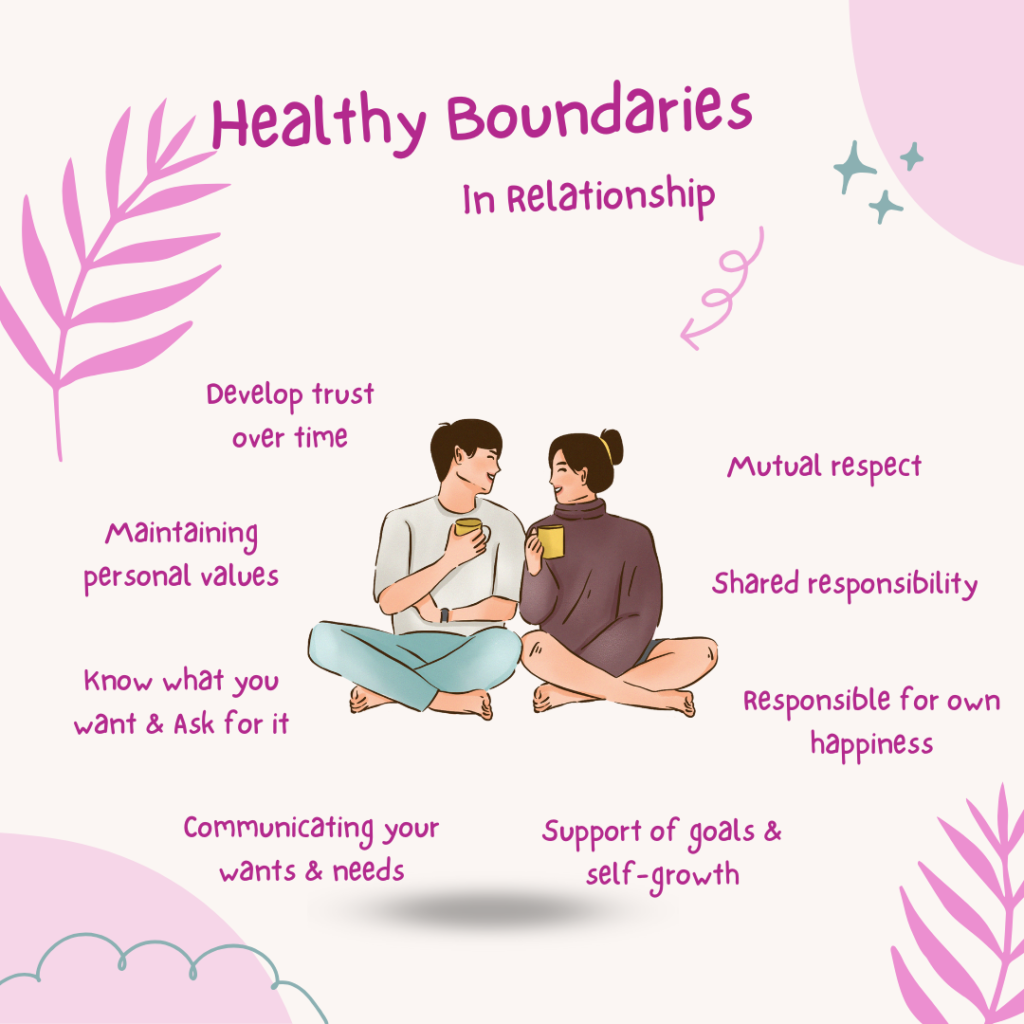Setting Healthy Boundaries as a Mother
Saying “yes” to everyone’s needs but your own?
For many of us, putting ourselves first can feel selfish, especially when it comes to family.
We might feel guilty for needing a break from our kids, our spouse, or being pressured to answer every phone call that comes.
It’s like we don’t deserve our quiet moment, that personal space, because our family’s happiness somehow rests entirely on our shoulders.
“Daring to set boundaries is about having the courage to love ourselves even when we risk disappointing others.” – Brené Brown
How to set healthy boundaries as a work from home mother.
In our world, where we are so connected with each other, relationships are important.
They bring us happiness, joy and a sense of belonging.
But sometimes, these connections can become tense or one-sided if boundaries are crossed.
Boundaries are like invisible fences we build around ourselves.
They help us protect our personal space, make sure our needs are met, and maintain respectful and balanced relationships.
Please do not forget to click here and follow me on Pinterest !!
Daily, we interact with all kinds of people—family, friends, colleagues, and strangers.
These interactions can often lead to uncomfortable situations where our personal boundaries are tested.
Setting healthy boundaries is extremely important for our well-being.
It might seem scary if you’ve never done it before.
You might worry, “Will they be mad?” or “Am I being selfish?”
But setting healthy boundaries is self-care, not selfishness.
It lets you be true to yourself in relationships while safeguarding your energy and time.
People who set healthy boundaries are not constantly on guard against the world.
They respect their personal space, and understand when and whom to invite into their lives.

Setting healthy boundaries: 10 realistic ways
Here are ten realistic ways to set healthy boundaries with others, especially as a mother.
1. Understand Your Needs and Limits
Before you can set boundaries, it’s important to know what you need and where your limits lie.
Think about past experiences where you felt uncomfortable, stressed, or taken advantage of.
Think about such situations and behaviours that made you uneasy.
Ask yourself questions like, “When did I last feel exhausted or drained?” or “What situations make me feel uncomfortable?”
Identify the people, places, and situations that give you stress or discomfort.
Knowing your triggers will help you set boundaries more easily.
Be honest with yourself about what you can and cannot tolerate.
Set your own personal limits, which are unique to you.
If your kids keep interrupting you during work and it’s stressing you out, set a rule for quiet times.
You could say, “I need to work from 10 AM to 12 PM. Please play quietly or do your homework during that time.”
2. Be clear and assertive about your boundaries
Clear communication is important in setting boundaries.
Be clear and assertive when telling your needs.
Use “I” statements to express your feelings.
State your needs and boundaries clearly and directly. Avoid being vague or ambiguous.
It should clearly convey how you feel and what you need.
This helps prevent the other person from feeling attacked.
Be calm and composed.
Outbursts can make it harder for others to understand your perspective.
Instead of saying, “You never give me any time for myself,” which can make your partner defensive, try saying, “I feel tired and stressed when I don’t have any time to myself. Can we work out a plan where I get some quiet time each evening?”
“The only people who get upset about you setting boundaries are the ones who were benefiting from you having none.” – Unknown
3. Be Consistent
By being consistent, you show others that you are serious about your boundaries.
Otherwise, it can confuse people and make it harder for them to respect your limits.
-Stick to your boundaries once you’ve set them.
– Politely remind others if they cross your boundaries; it may take time for them to adjust.
– Be patient yet firm as others learn to respect your boundaries.
For example, if you decide to have “me-time” every Sunday afternoon, stick to it.
Clearly explain this boundary to your family.
With time, they will understand and respect your need for personal time.
4. Learn to Say No
“No is a complete sentence.” – Anne Lamott
Saying no is a powerful way to set boundaries.
It’s important to recognize that saying no to others often means saying yes to yourself and your needs.
Practice saying no in a firm but polite manner, you have the right to prioritize your well-being.
Be honest about your capacity and willingness to take on more responsibilities.
Don’t over explain and keep it simple: “I can’t do that right now” is enough.
Stand firm if people push back.
If a friend asks you to do something on short notice and you have some other plans, say, “I’m sorry, but I can’t do it this evening. I already have plans.”
ALSO READ: How to make decisions quickly when you can’t decide.

5. Use Technology Wisely
Technology can be both helpful and distracting.
Set boundaries to ensure you have time to recharge.
Schedule times to check emails and messages, and inform others of your availability.
Disable unimportant notifications to reduce distractions.
Identify places in your home, like the bedroom or dining area, where technology is not allowed.
Make a no-phones rule during family meals so that you can enjoy quality time together.
Tell your family and set an example by leaving your phone in another room during meals.
RELATED: BALANCING TECHNOLOGY WITH LIFE
6. Create Physical Boundaries
Physical boundaries are important for comfort and security.
They include personal space and privacy.
Be mindful and respectful of others’ personal space and privacy.
If you need alone time to unwind, tell your family, “I need some time relax after stressful day at work. I’ll be in my room for the next hour and would appreciate some privacy.”
8. Respect Others’ Boundaries
Healthy relationships require mutual respect for boundaries.
Pay attention and respect others’ boundaries.
Understand that others’ boundaries are about their needs.
Adapt accordingly and adjust your behavior to respect their boundaries.
If your partner needs alone time after work, say, “I understand. Take all the time you need. Let’s catch up when you’re ready.”
9. Adjust Boundaries as Needed
Boundaries change as your needs and circumstances evolve.
Take a look at your boundaries to ensure they still meet your needs.
Be flexible and adjust your boundaries for new situations or relationships.
10. Practice Self-Care
Self-care helps you maintain boundaries and cope with challenges.
Physical Self-Care: Exercise, eat well, and get enough sleep.
Emotional Self-Care: Journal, meditate, or seek therapy.
Mental Self-Care: Read, learn new skills, or enjoy hobbies.
Indulge in activities that refresh you, like exercise or spending time in nature.
For instance, set aside time each morning for a walk or yoga to start your day.
RELATED: 5-Minute Self-Care Ideas for the Busy woman Recharge Your Day in Busy Moments
Setting healthy boundaries leads to a balanced and fulfilling life.
By understanding your needs, communicating clearly, being consistent, and respecting others’ boundaries, you create a safe and respectful environment.
“Compassionate people ask for what they need. They say no when they need to, and when they say yes, they mean it. They’re compassionate because their boundaries keep them out of resentment.” – Brené Brown

When friends share posts, they are telling Google that the site is worth sharing with
others, and that helps build my small blog business.
Thank you for sharing !!



Establishing and maintaining healthy boundaries requires ongoing effort, but the benefits make it a worthwhile investment.
yes it does make it worthwhile. thanks for reading.
I really need to be more consistent and get to bed on time. And, sigh, exercise more often than once a month when I get a sudden burst of energy. Self-care is hard when you have ADHD.
I can understand :). Thanks for reading.